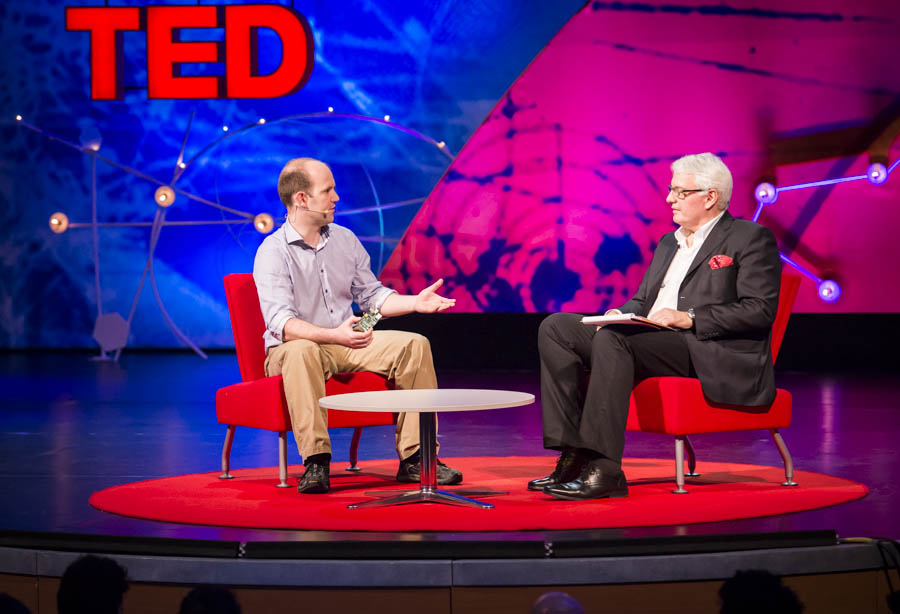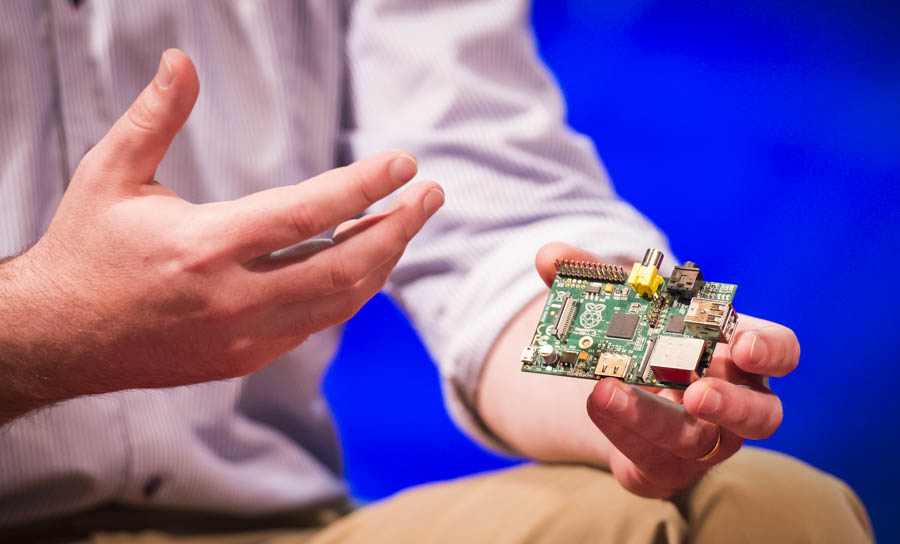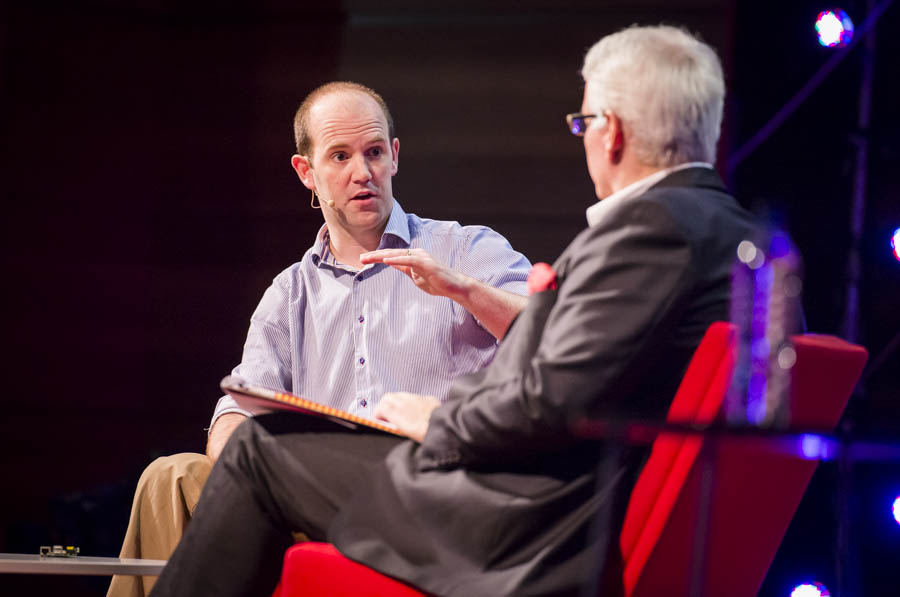Fifteen months ago, a small device called Raspberry Pi was put on the market. Despite the glut of gleaming, do-everything devices available today, this credit-card sized, £25, Linux-run computer with nothing but a microprocessor, 512MB RAM, some ports and an SD card slot has sold more than 1 mllion pieces since its launch. What’s it for, and what’s the appeal? Bruno Giussani sits down with Raspberry Pi inventor Eben Upton to get the scoop. Here are few things we found out.
What is a Raspberry Pi?
It’s a credit-card sized computer with very few of the features you imagine a computer would have, says Upton, but it’s designed to plug into things you already own — your television, a mouse, a network. It’s powered using a mobile phone charger, and storage is on an SD card.
What was the problem you were trying to solve?
Upton explains that at the University of Cambridge, where he was once director of computer sciences at St. John’s College, the numbers of applicants to study computer science were dropping. “From 1995, when we had 500 applicants for 80 to 90 places, by 2005 we had 250,” he says. And the skills of those applicants had dropped — many who felt “technical” had only ever written a web page. Compare that to those who came of age in the Commodore 64 era — or, in the UK, who had access to the state-subsidized BBC Micro — who arrived at university with 10 years of programning experience. So the Raspberry Pi was built in order to counter the sense that the pipeline was drying up. “Our idea was to build something cheap, powerful and available for children’s bedrooms so they could have the same experience we had.”
Why should someone like me get one?
The Raspberry Pi was intended for kids, says Upton, and it was with this in mind that Raspberry Pi was developed — from the child-friendly price tag up. “The whole story for Raspberry Pi is what we can squeeze in there? Can we squeeze something interesting enough that it will become a part of a child’s life?”
Having said that, the vast majority of the 1.3 million units have gone into the hands of tech-literate adults, and about about 30 to 40% into the hands of kids. Upton reckons those adults will be key to helping make the Raspberry Pi exciting for children. The risk, he says, is that governments are underinvesting in giving teachers the skills required to teach children, something that he is lobbying to improve in the UK. “This is a great platform for children of engineers,” he notes. “If your mother or father is an engineer, you’re going to have a great experience.”
And what are people doing with the Raspberry Pi?
Being a software engineer, Upton thought that people would want to write 3D graphical demos, but people have been using the I/O to create physical projects. “There’s a wonderful guy in the south of the UK who puts them onto high-altitude balloons, sends them up and sends down pictures from 40 kilometers up. I’m a child of the ’80s, a real space cadet… It puts a space program within the reach of every primary school in the world.”
Last word:
“This is not just about computing any more. it’s about getting people excited about a broader range of what we call STEM education — science, technology, engineering and mathematics.”



Comments (5)
Pingback: 樹莓派 (Raspberry Pi)能吃嗎? | 維京人酒吧 Viking Bar
Pingback: Raspberry Pi - Placa de baixo custo para Makers
Pingback: Social Innovation News | Raspberry Pi – Technology for social good
Pingback: Wherefore Raspberry Pi?: Eben Upton at TEDGlobal 2013 | Emily Baldwin, Possibilites and Ideation